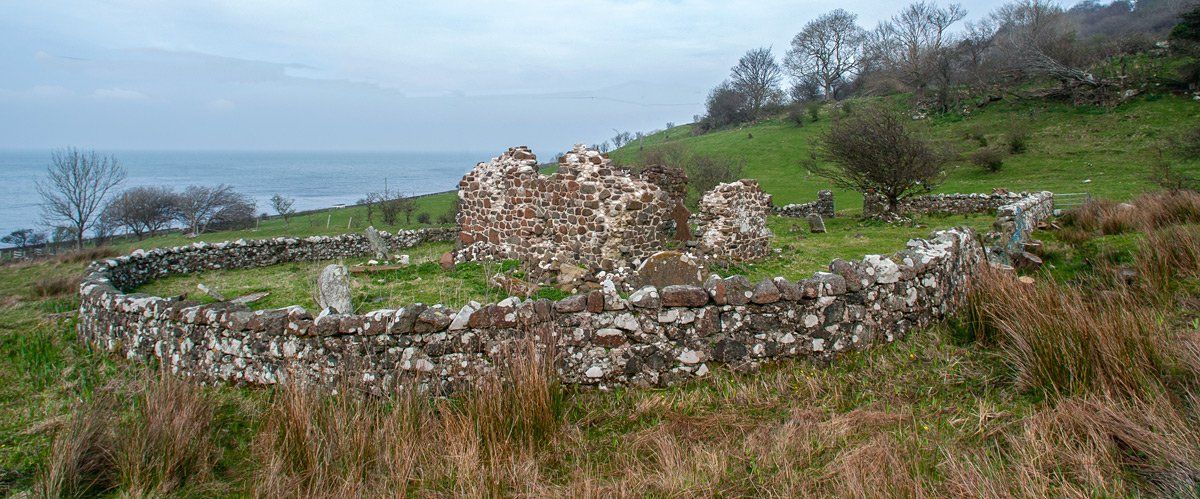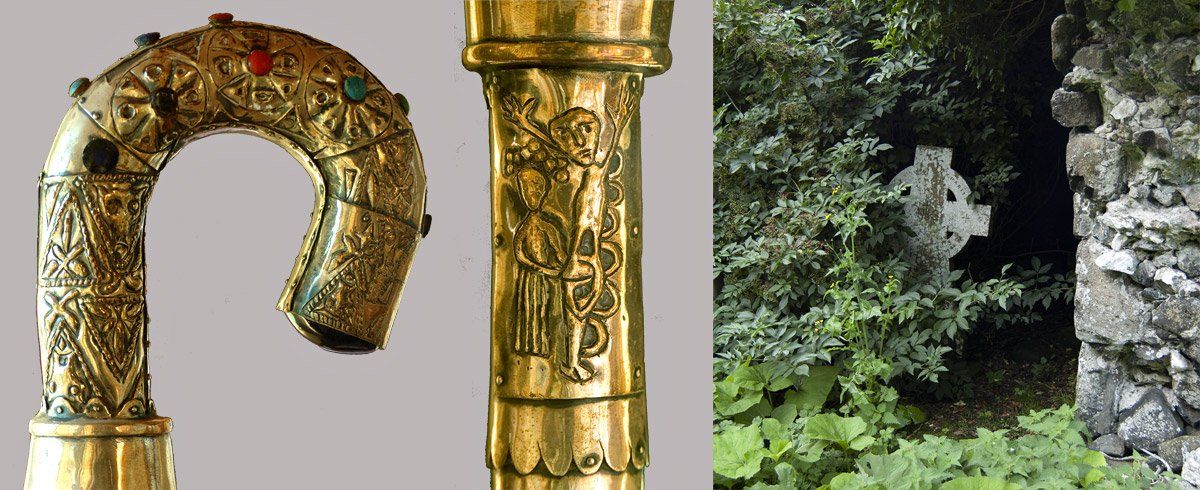Ardclinis Church
The ruins of Ardclinis Church and Graveyard in the townland of Ardclinis overlooks Red Bay, the date of construction is not know but it is recorded in the Ecclesiastical Taxation of 1306-1307 as "Ecclesia de Ardglanys" with a taxable value of twenty shillings. The church we see today would probably have been thatched and fell into disrepair and ruins during the late 16th century. It is believed to have been founded by St. MacNissi or St. McKena, local stories refer to a stone that existed on the roadside nearby which was known as McKena's Chair and reputed to 'freshen up' any weary traveller who sat on it.
The graveyard is uneven and many of the headstones are fallen or semi-buried. A more recent dry stone wall follows a semi-circular curve around the western perimeter of the church and along the old boundary. The church is more famously known for the 'Ardclinis Crozier' which resided in a ruined window until the mid-eighteenth century. It then passed into the possession of the Galvin family of Glenarm, then through marriage to the Magill family of Aughaboy and finally, a generation later, to the McAllister family. They sold it to the National Museum in Dublin in 1932, the proceeds going to the renovation of Feystone Chapel at Glenarm. The crozier figured prominently in the early Christian church and is a unique example from that period in Ireland.
It can best be described as a pastoral staff belonging to a high member of the clergy and symbolises the spiritual shepherd. The pointed ferrule at the base symbolising the obligation of the owner to inspire or push the spiritually lazy; the crook at the top, his obligation to draw back those who stray from the faith and the staff, his obligation to stand as a firm support for the faithful. The crozier had other uses too: it was used to make an oath upon and also to extort the truth when other means had failed. The crozier bears testament to the creativity and skill of early Christian craftsmen. A replica of the crozier can be seen in the porch of St Patrick and St Bridgid's Church in Waterfoot.



